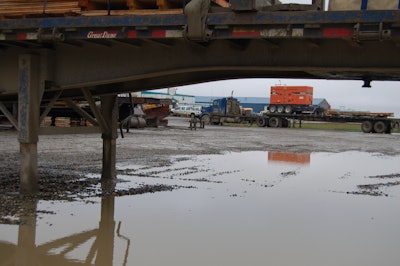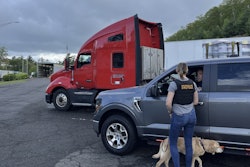The Trucking Law segment is a monthly feature on Overdrive, in which we pose commonly asked questions from truckers and owner-operators to legal experts. In this installment, attorney Paul Taylor explores how to log a yard move with ELDs. Find all Trucking Law installments via this link.
 Yard moves are considered on-duty time. Properly defined, a yard move is not considered driving time for logging purposes.
Yard moves are considered on-duty time. Properly defined, a yard move is not considered driving time for logging purposes.The advent of virtually universal use of electronic logging devices under the ELD mandate has brought a new focus to some of the murkier areas of the hours of service regulations. The new yard moves logbook category is one of those.
What is a yard move?
A yard move is the operation of a commercial vehicle wholly within a carrier’s terminal yard, a customer’s yard or the lot of a repair facility. One qualifier is that the facility has signs or gates restricting the public from entry.
Are yard moves to be logged as driving time?
No. The Federal Motor Carrier Safety Administration reasons that driving time applies to operation on a roadway that is open to the public, as opposed to yards with restricted access.
Can I use the yard move option on the ELD when I am driving at a customer’s facility?
Yes, but only if it is a closed facility with restricted public access. Moving a trailer or bobtailing at a shopping mall or other road or parking lot open to the public does not qualify as a yard move. It must be logged as driving time.
 Paul O. Taylor is managing partner of Truckers Justice Center and has represented truck drivers for over 25 years. He can be reached at (855) 943-3518 or at TruckersJusticeCenter.com.
Paul O. Taylor is managing partner of Truckers Justice Center and has represented truck drivers for over 25 years. He can be reached at (855) 943-3518 or at TruckersJusticeCenter.com.My dispatcher has assigned me to shuttle trailers across a public street between the terminal and a customer facility. How is this time to be logged?

Because this involves driving on a public street, the time must be recorded as driving time.
How does time spent performing yard moves count toward my daily 14-hour window and cumulative 60/70-hour limit?
Time spent performing yard moves qualifies as “on duty, not driving” time. If you start your day performing yard moves, then you have started the 14-hour window within which you may drive up to 11 hours on public roadways. Since yard moves are on-duty, they must be included in the time after which you may not operate in the seven-day or eight-day period.
Can my carrier require me to perform yard moves after I have driven 11 hours on public roads, or after I have been on duty 70 hours in eight consecutive days?
Yes. The hours of service regulations limit only when you may drive on a highway or road open to the public. You may be required to perform on-duty not-driving activities like a yard move after you have reached rule-specific maximums of all kinds, including on-duty maximums.
What rights do I have if my carrier asks me to record driving on public roads as yard moves?
If you knowingly falsify your logs, you commit a felony. So you always should record driving time on public roads as driving time.
The employee protection provisions of the Surface Transportation Assistance Act prohibit retaliation for accurately recording any on-duty time, including driving. The law also prohibits retaliation against a driver who refuses to operate a commercial vehicle in violation of any commercial vehicle safety law or regulation. STAA usually provides more legal support than the driver coercion rule does for drivers who are victims of carrier or broker coercion.











